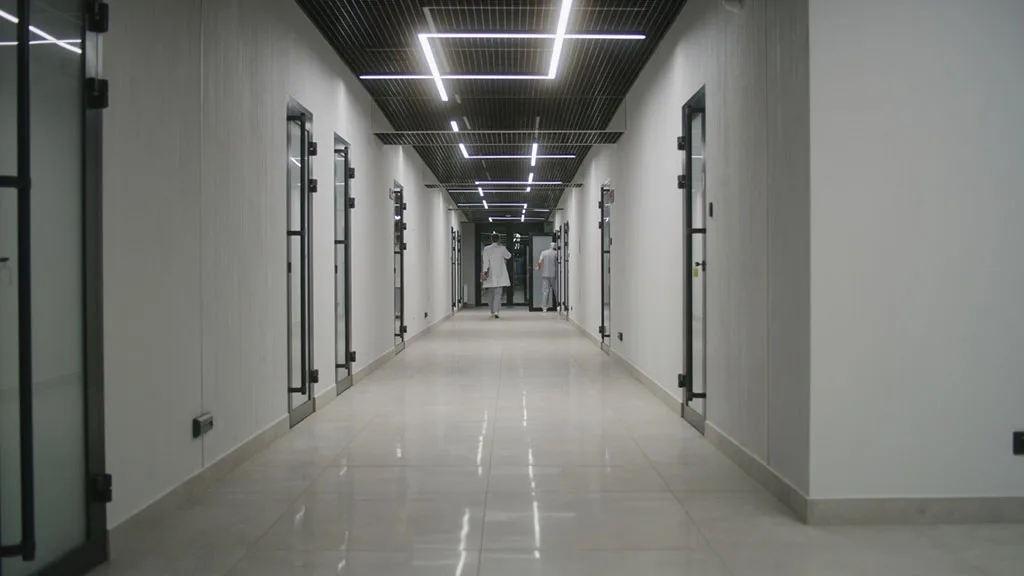The biopharmaceutical cleanroom construction market is experiencing unprecedented growth, expanding from $9.03 billion in 2024 to a projected $27.80 billion by 2034 at an 11.90% CAGR. This explosive demand is driven by stringent regulatory requirements, the biologics manufacturing boom, and massive pharmaceutical reshoring investments. For construction companies, understanding the complex intersection of ISO 14644 classifications, FDA cGMP requirements, and EU GMP Annex 1 standards it’s the key to capturing lucrative projects ranging from $40-600 million per facility.
The stakes couldn’t be higher. A single compliance failure during construction can trigger FDA Official Action Indicated (OAI) classifications, potentially shutting down billion-dollar manufacturing operations. Meanwhile, energy costs for pharmaceutical cleanrooms run 15 times higher than commercial buildings, making efficient design critical for long-term client relationships. This comprehensive guide provides construction professionals with the technical authority and regulatory insight needed to excel in this demanding but rewarding market.
ISO 14644: The Global Benchmark
The ISO 14644 standard defines nine classes of cleanrooms based on airborne particle limits. For pharmaceutical projects, ISO Class 5 serves as the industry workhorse, requiring:
- 240-360 air changes per hour via HEPA filters
- Strict pressure differentials (12.5–25 Pa) between rooms
- Seamless, non-porous surfaces to prevent contamination
Surface Standards:
- Stainless steel 316L for equipment contact surfaces
- Epoxy coatings and specialized wall systems
Validation Protocols (IQ/OQ/PQ):
- Installation Qualification during construction
- Operational Qualification demonstrating system performance
- Performance Qualification under worst-case conditions
- Adds 6–12 months to project timelines
Change Control Procedures:
- 21 CFR 211.22 impacts construction projects throughout their lifecycle
- Requires documented approval for any modifications
- Bottom line: compliance is not optional—it shapes every construction decision.
EU GMP Annex 1: Setting the Global Gold Standard
The 2022 revision of EU GMP Annex 1 introduced Contamination Control Strategy (CCS) requirements that impact every aspect of construction. For Grade A/ISO 5 areas, zero microbial growth is tolerated, driving adoption of:
Advanced Airflow Systems:
- Unidirectional airflow (0.36–0.54 m/s)
- Barrier technologies like isolators and RABS (Restricted Access Barrier Systems)
Surface Requirements:
- Smooth, impervious, unbroken surfaces throughout
- Flush-mounted systems with coved corners
- Elimination of contamination traps through specialized panel construction
Requalification Requirements:
- Maximum intervals of six months for Grade A/B areas
- Twelve months for Grade C/D areas
- Requires maintenance accessibility planning during construction
Research Triangle Park: A $10 Billion Opportunity
North Carolina’s Research Triangle Park has emerged as the biopharmaceutical epicenter of the U.S., with major investments including:
This concentration of pharmaceutical investment creates unprecedented opportunities for specialized construction companies.
Managing Validation Timelines and Risk
Extended Project Schedules: Pharmaceutical cleanroom validation typically extends project timelines by 6-12 months beyond mechanical completion. Understanding these requirements during planning prevents costly delays:
- Installation Qualification (IQ) occurs during construction
- Operational Qualification (OQ) requires 2-4 weeks for system performance testing
- Performance Qualification (PQ) extends 4-8 weeks under worst-case conditions
Risk Management Strategies:
- Budget contingencies: 15-25% for pharmaceutical-specific requirements
- Early stakeholder engagement: Include production, quality, maintenance, and engineering teams
- Design-build approaches: Enable early contractor engagement and value engineering
Common Risk Factors:
- Over-specification leading to 30-50% budget overruns
- Late design changes triggering project delays
- Inadequate contamination control during construction
Key Construction Practices for Success
To compete effectively in this high-stakes sector, contractors must adopt specialized practices:
Construction Methodologies:
- Sequential construction: Enables phased occupancy while protecting classified areas
- Seamless materials: Epoxy flooring, flush ceilings, and monolithic wall panels
- Quality control systems: Material traceability, pre-validation cleaning, and comprehensive documentation
Advanced Technologies:
- Digital twins for process optimization
- Real-time monitoring for environmental parameters
- AI-based risk prediction and management
Energy Optimization: Managing Intensive Demands
Biopharmaceutical cleanrooms consume 15 times more energy than commercial buildings, with HVAC systems representing 50%+ of total electricity consumption. However, advanced systems can reduce these costs by 25–50%:
Proven Energy Solutions:
- Variable Air Volume (VAV) systems: Demand-based airflow delivers 25% energy savings
- LED lighting solutions: 85% less energy consumption with lower HVAC load
- Energy Recovery Ventilation (ERV): 11% savings via heat recovery
- Advanced Demand Controlled Filtration (DCF): Up to 93.6% energy savings potential in specific applications
These solutions not only reduce operational costs but also strengthen long-term client relationships.
Your Gateway to Pharmaceutical Construction Excellence
Pharmaceutical cleanroom construction represents one of the construction industry’s most technically demanding and financially rewarding sectors. Success requires mastery of ISO 14644 classifications, FDA cGMP requirements, and EU GMP standards, combined with advanced construction methodologies that deliver quality, speed, and long-term value.
Ready to capture your share of the pharmaceutical construction boom? Contact CIC Construction Group today to discuss your next pharmaceutical facility project.



